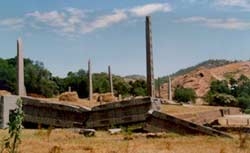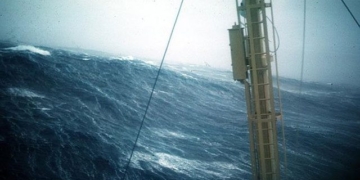The world’s longest suspension bridge, valued at nearly $13 billion, is expected to be inaugurated in the early 2030s.
The country overtaking China in constructing the longest suspension bridge in the world is Italy.
For decades, Italian engineers have been researching designs for a significant project. This project aims to address one of the biggest issues in southern Italy by connecting 5 million people on the island of Sicily to the mainland. This connection is expected to bring jobs and growth to economically struggling areas in the south.
Thus, the goal of this $12.7 billion mega project is named the Messina Strait Bridge. It is anticipated that this bridge will become the longest suspension bridge in the world upon its completion.
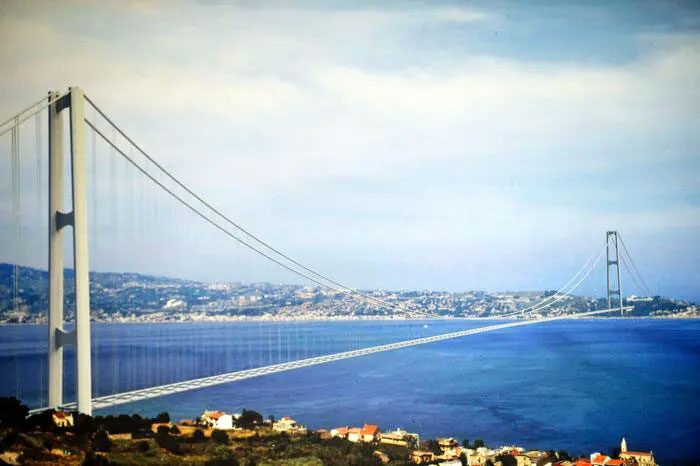
Italy is preparing to build the world’s longest suspension bridge called the Messina Strait Bridge. (Image: ANSA).
Professor Raimondo Betti from Columbia University stated: “No one has ever built a bridge this large, so this is an incredible challenge“.
In fact, constructing a bridge longer than 3 kilometers in an area with strong winds and frequent earthquakes is no easy feat and certainly not inexpensive.
So, how will Italy construct the world’s longest suspension bridge?
Italy Reveals How to Build the World’s Longest Suspension Bridge
First, we need to understand why building this bridge is so perilous. Experts explain that the road running directly beneath this bridge is where the Eurasian and African tectonic plates meet. Consequently, this area experienced a powerful earthquake measuring 7.5 on the Richter scale in 1908, followed by another measuring 6.1 fifty years later.
The fault line has created this narrow corridor. Therefore, when winds from the south rush in, they accelerate as they are funneled into a smaller space, sometimes reaching speeds of 274 km/h. As a result, the strong winds here could be disastrous for bridges.
Professor Raimondo Betti noted that the suspension bridge is stabilized by a cable system that connects the bridge deck to the towers, supported by vertical struts.
“When vehicles cross this bridge, the deck transmits loads to the main cables through the suspension system. The main cables distribute the load to the towers and to the anchorage points“, he shared.
Experts indicate that the Messina Bridge will be erected thanks to two massive towers. Each tower will be about 18 meters taller than the Empire State Building. The bridge deck will span 3.5 kilometers, taking approximately 10 minutes to cross by car, which is over 50% longer than the current record-holder, the Çanakkale Bridge (2.02 km) in Turkey.
In reality, the great length poses a challenge in constructing a suspension bridge. However, it also serves as a solution to one of the significant environmental dangers. According to experts, a longer bridge deck helps protect the bridge against seismic activity.
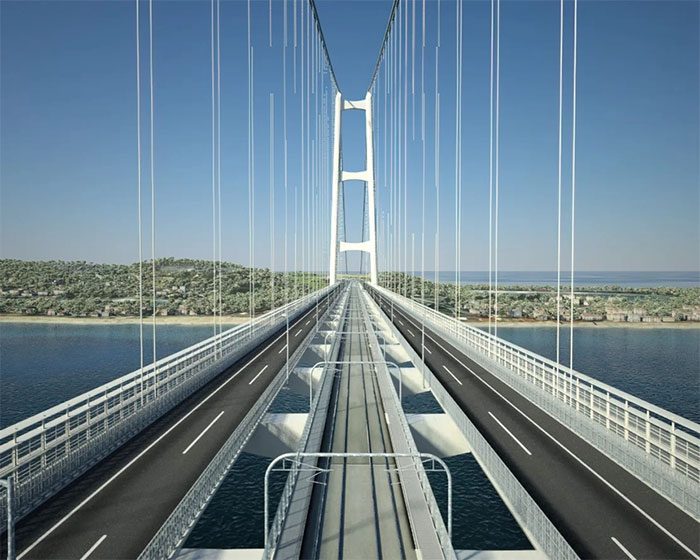
The deck of the world’s longest suspension bridge is specially designed to withstand earthquakes of up to 7.5 on the Richter scale. (Image: CNN)
Additionally, the upper part of the bridge features one of the latest engineering advancements: hourglass-shaped struts. Experts state that these struts allow the bridge’s legs to be more flexible compared to traditional cross-bracing during an earthquake.
With flexible legs and deck, theoretically, this long suspension bridge could withstand an earthquake measuring up to 7.5 on the Richter scale. This is the highest standard compared to any structure in the world.
“Seismic activity is crucial, but we know how to design for it. In my opinion, the biggest concern for this suspension bridge is the wind“, emphasized Professor Raimondo Betti.
To prevent potential incidents with the bridge during high winds, engineers have developed a new type of deck. The Messina Bridge’s deck consists of three box girders, including two for vehicles and one in the middle for trains.
These box girders are connected by a tightly arranged layer of cross beams. The lanes and tracks of the Messina Bridge can accommodate up to 6,000 vehicles per hour and 200 trains daily.
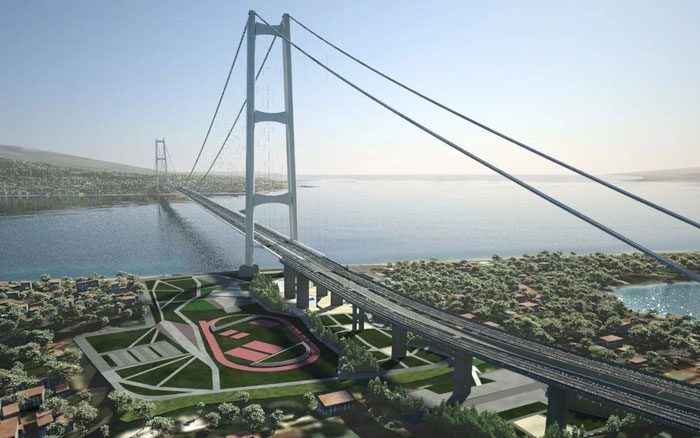
Design of the Messina Bridge. (Image: CNN).
With its specially designed deck, the wind will flow through like an airplane wing, creating minimal strong vibrations. Engineers state that with this specially designed deck, the Messina Bridge can withstand winds of up to 300 km/h (equivalent to the maximum wind speed of a Category 5 hurricane).
Authorities plan to begin construction of the Messina Bridge in mid-2024, with completion expected in the early 2030s.









































